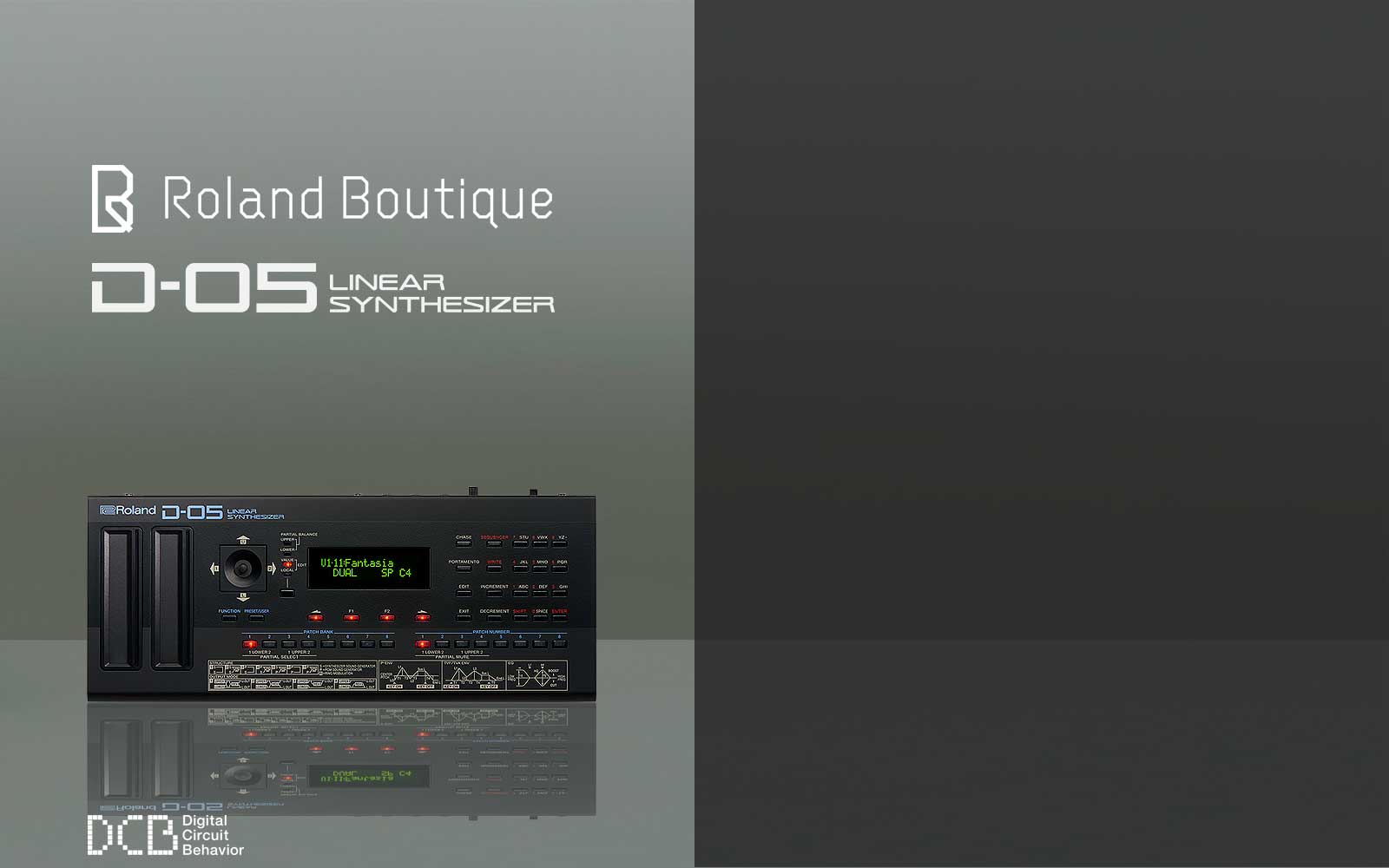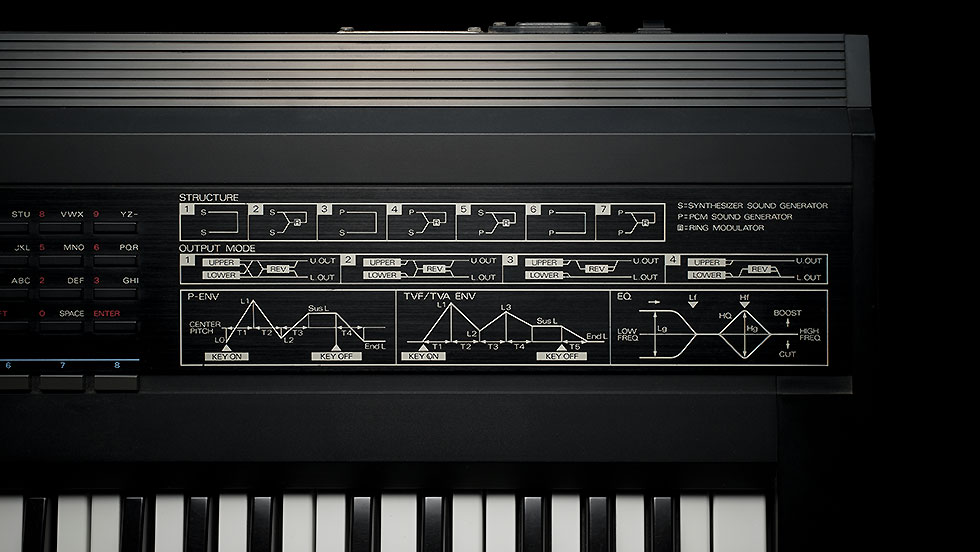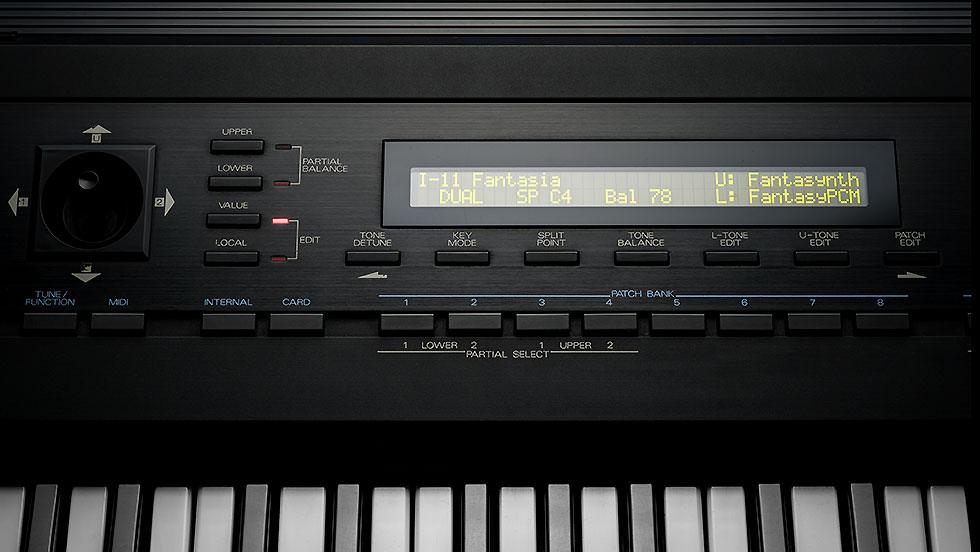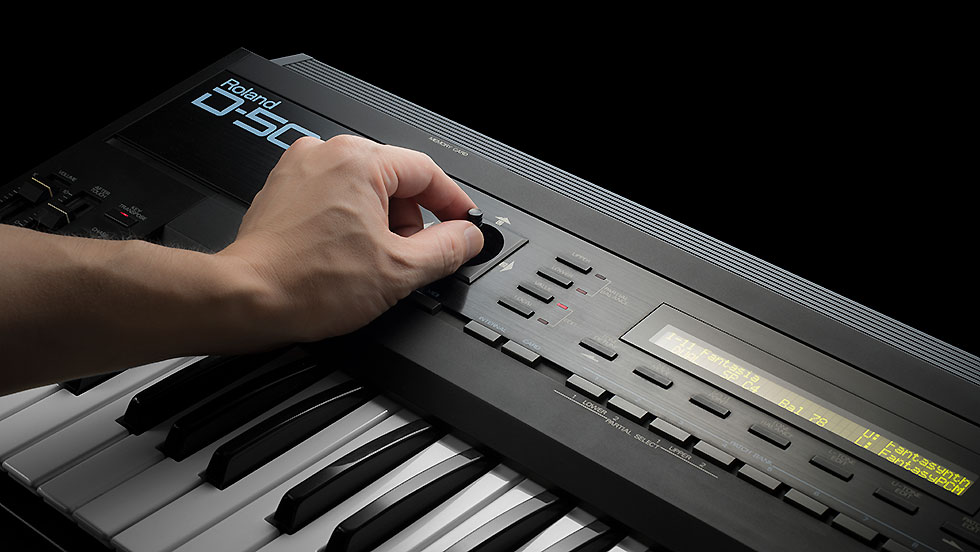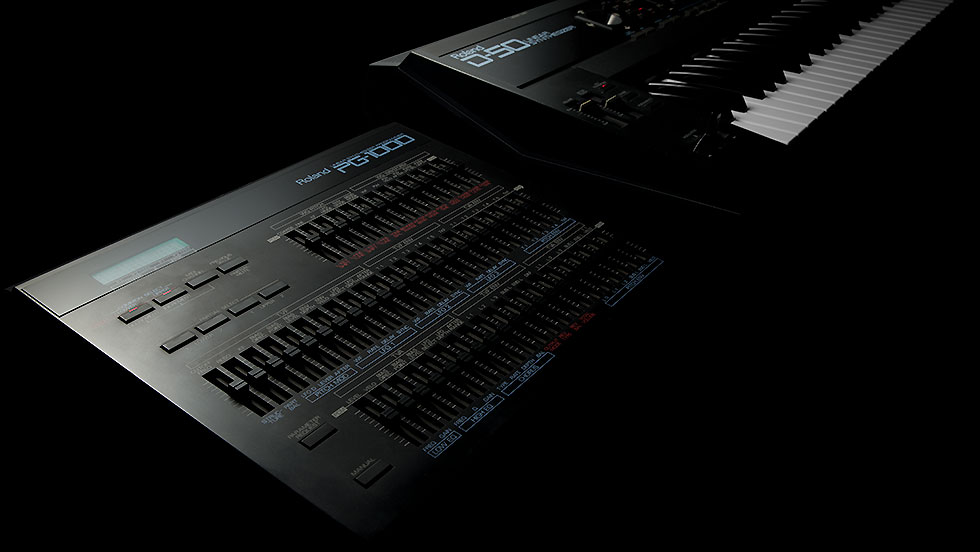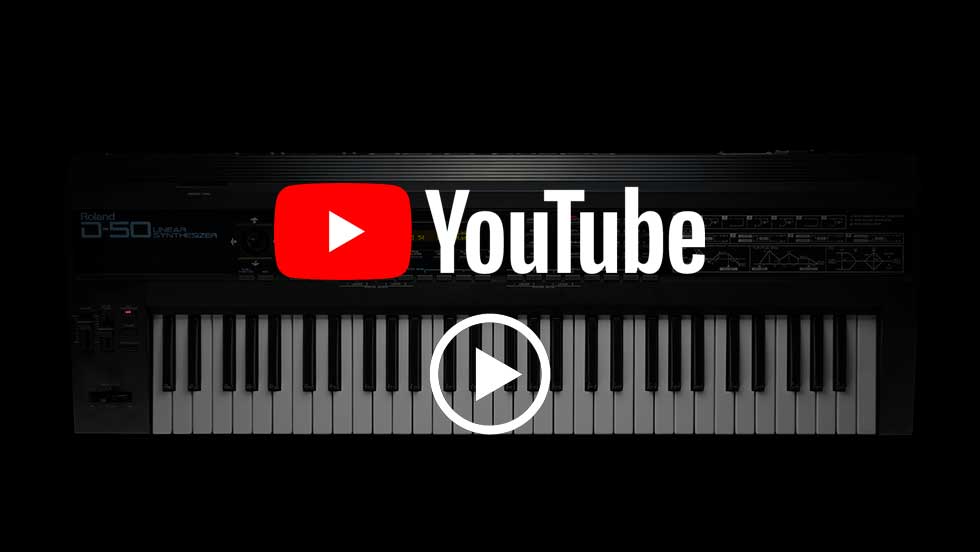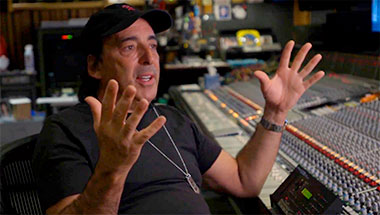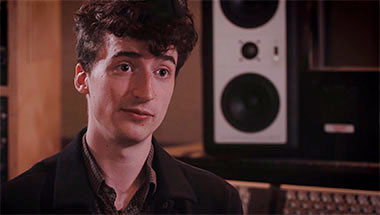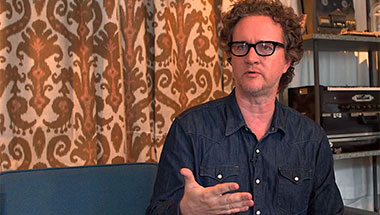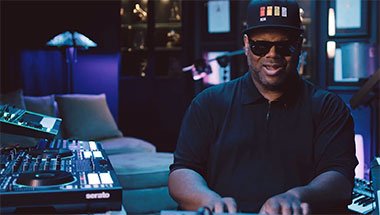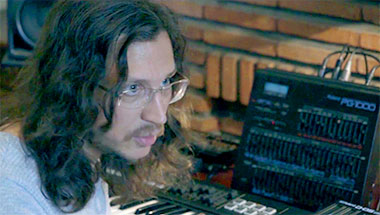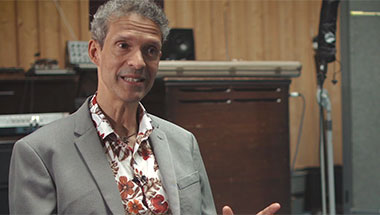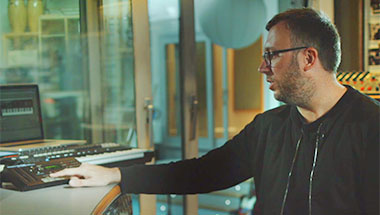

The Legendary “D-50” then …
Making its debut in 1987, the D-50 was the first fully digital synthesizer from Roland. Linear Arithmetic (LA) Synthesis, which combines traditional subtractive synthesis with harmonically-complex sampled (PCM) waveforms, proved to be a sonic breakthrough. And, as the first performance synthesizer to integrate DSP effects, the Roland D-50 delivered instant studio-quality sounds to keyboard players around the world.
Well ahead of its time, the D-50 combined samples and synthesis, resulting in sounds that ranged from warm analog to dynamic acoustic and cutting-edge digital; all given a wonderful spacious sparkle by the integrated digital effects. D-50 preset patches such as “Fantasia” and “Calliope” showcased the potential of LA synthesis and, along with many others, became signature sounds for some of the biggest pop hits of the era (and continue to be used by artists today).
Commemorating the 30th Anniversary of this legendary synthesizer, this page explores the history of the Roland D-50, and features interviews with some of the original engineers, sound designers, and musicians that brought the iconic instrument to life. Now, join us as we revisit how it felt to be Designing The Future way back in 1987…
The D-50 Legend as told by the original engineers
Tadao Kikumoto (Technical R&D Leader at the time of D-50)
“Roland D-50: Born from the “Ideality” of creative musical instrument development”
Through my development experience of TR-808 and 909, I found that 90% of all sound identities occur during the quick transformation of overtones arising from the initial touch to around 20 or 30 milliseconds. The sound after the attack is not so important. Actually, this way of thinking led to developing the D-50.
The Yamaha DX7, which was already in the market at that time, was an epoch-making digital synthesizer, adopting complicated and anharmonic sounds (which did not exist in analog) in the initial part. Our first fully digital synthesizer adopted granular PCM in the initial part, after which I decided to implement an intuitive and versatile digital signal processing using an analog subtractive method. It was a big question which phoneme to adopt for the initial part. If it is too concrete sound, it is not versatile, so we sought for a sound which is close to real, but obscure. I consulted Eric Persing, who belonged at that time to Roland, and he said, “I have an idea, leave it to me!” As a result, an “ideal” sound was born.
Another important point for the LA sound source is that we integrated digital effects for the first time in history. There was opinion against it inside the company, but we obtained a synergy effect by adding Chorus and Reverb.

We aimed at “real” sound, but we could create the “ideal” sound around there.
The TR-808 and TR-909, which were developed long before D-50, aimed at reproducing real sound. However, in the end, a new sound which is simpler but stronger than real drum sound, without contaminating or being trivial, was born. And this is the “ideality”. It doesn’t mean just “idea” but also Theory of Forms (Plato), ideal, imagination, or creation. If reality is compared to a photograph, ideality is a painting.
Therefore, D-50’s sound is like a painting of impressionism and abstractionism, and it is not a sampler but a synthesizer, which is a creative instrument.
Japanese anime has its special aesthetic standard; big eyes in small face, small mouth and chin. It looked strange to western people, but is well accepted nowadays. Aesthetic study, which is a study of aesthetic value, seems to become more and more popular now.
I think D-50 is just a milestone vintage of the transition period from analog to digital. I am proud that Roland was, and still is, searching for “ideality” in such transition period, and even now for the future.
Finally, let me express my big appreciation to Eric, Adrian Scott, and the engineers who worked for this project, and who became creative leaders.
We Design The Future.
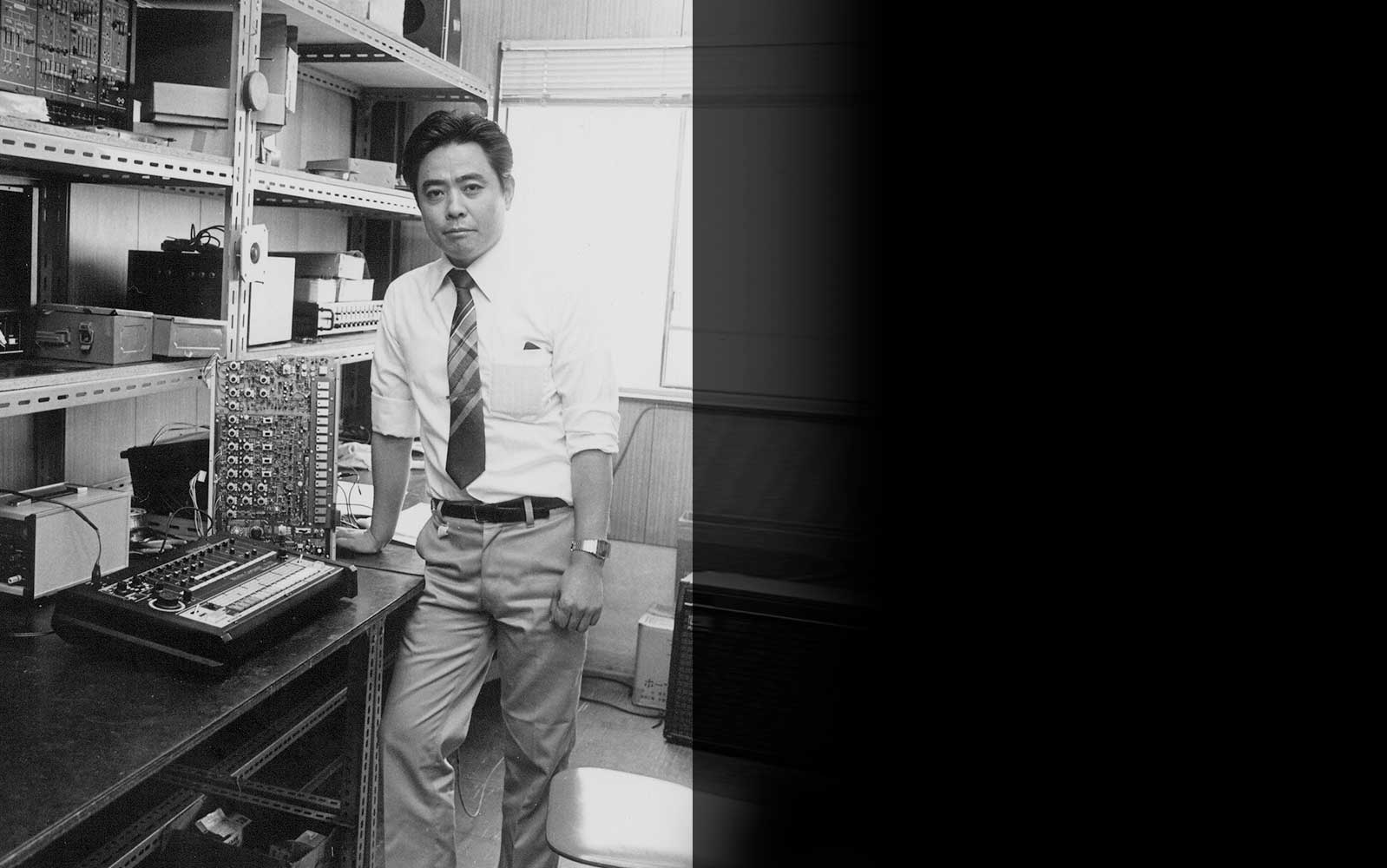
Toshio Yamabata (Development Team Leader for D-50)
“The sound of D-50: neither digital, nor analog”
The D-50’s synthesis caused unique overtone elements due to its special calculation method. This is why every sound from this machine has its own unique ambience and warmth.
I felt that these overtone elements added a kind of noise that we could not get rid of, which made me think this product wouldn’t be marketable. During the development process, this noise actually turned out to be the D-50’s character. It went so nicely with digital effects, and became a special air/ambience. In this way, such warm sound which is neither analog or digital was created.
Before D-50, it was normal to make sounds after hardware development, but for the D-50, Eric Persing and Adrian Scott participated in sound making and evaluation from the very beginning of the process. They understood the D-50’s characteristics, and created so many new sounds which I had never heard before. In BANK-1 (11-18), we put our favorite and most characteristic sounds as presets. One of the characteristic sounds is “Digital Native Dance”, which produces a special atmosphere. It is a PCM loop born by chance. An engineer, wanting to use many phonemes in one shot, combined them all into one loop. Eric (Persing), who happened to be there, noticed this and said, “That was nice!”. No one knows if this engineer did it with intention or not. It is still unknown…
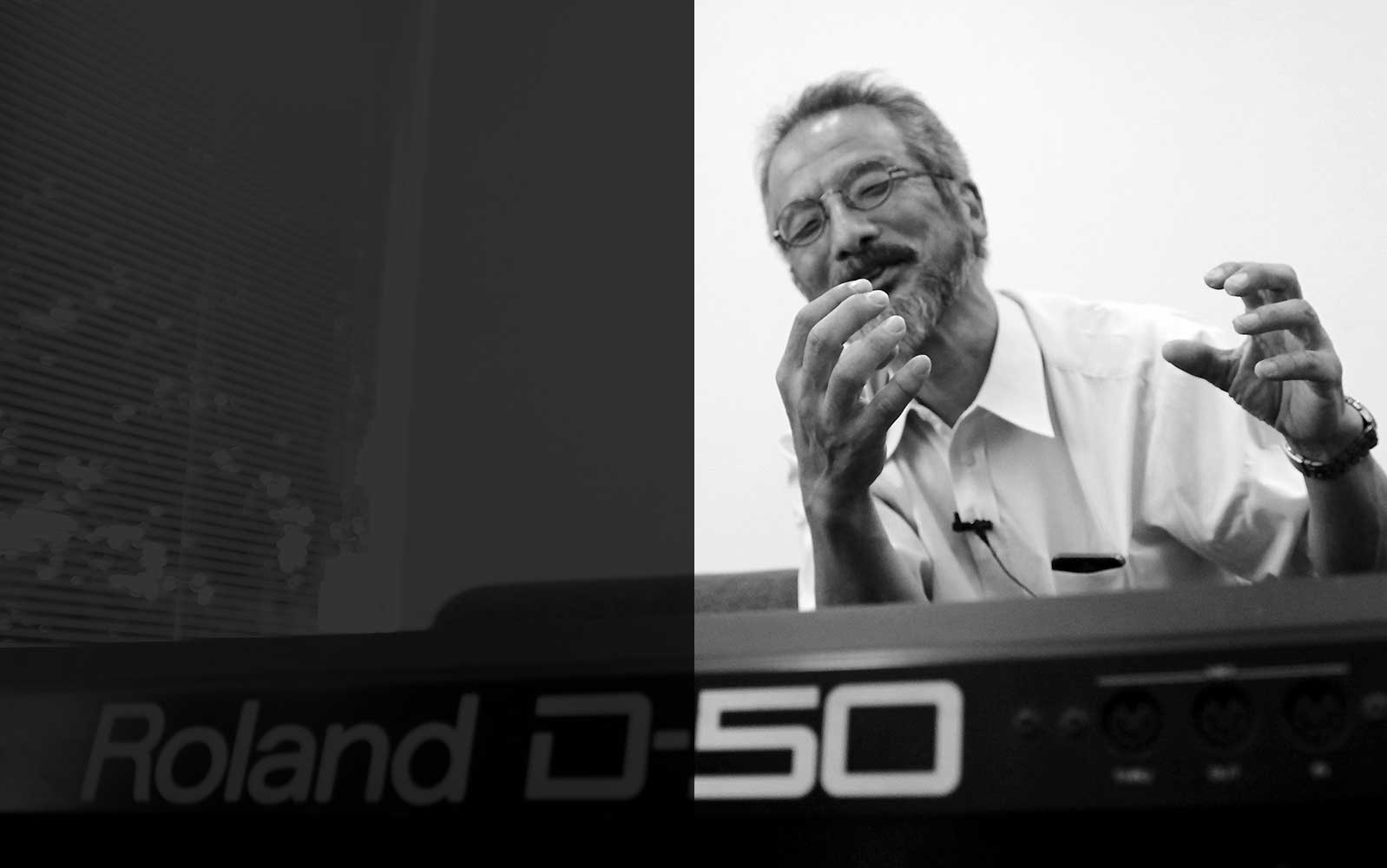
Kazz Takahashi (Development Engineer for D-50)
“Focused on Visual Interface”
At that time, Yamaha was recognized as the first in digital, with Roland being seen as an “analog brand” in the market. The project of D-50 started under such pressure among management and all the staff. The development of digital synthesizers encountered so many first trials, with so many headaches, however, all the members felt that they were opening up a new path, and thus we could keep working hard.
In most digital synthesizers of the time, there were no buttons or controls that could be operated intuitively, and an “info display” was a kind of industry standard. It was so hard to make sounds with those small displays and unusual parameters, having to go deep into a directory. Therefore, with D-50 we tried different visual and physical interfaces such as the joystick and “PG-1000” Programmer. Especially, the joystick enabled parallel handling of two parameters while playing, and as a result, unexpected sounds were born - this was really creative.
I was simply happy to hear such comments as “Oh, it is a Roland-ish synthesizer”. I felt satisfied to be a part of the project. It is a big honor of mine to take part in Roland’s historical first digital synthesizer. The D-50 is a great machine which produces unusual, and warm sound. Please give it a try whenever you can.
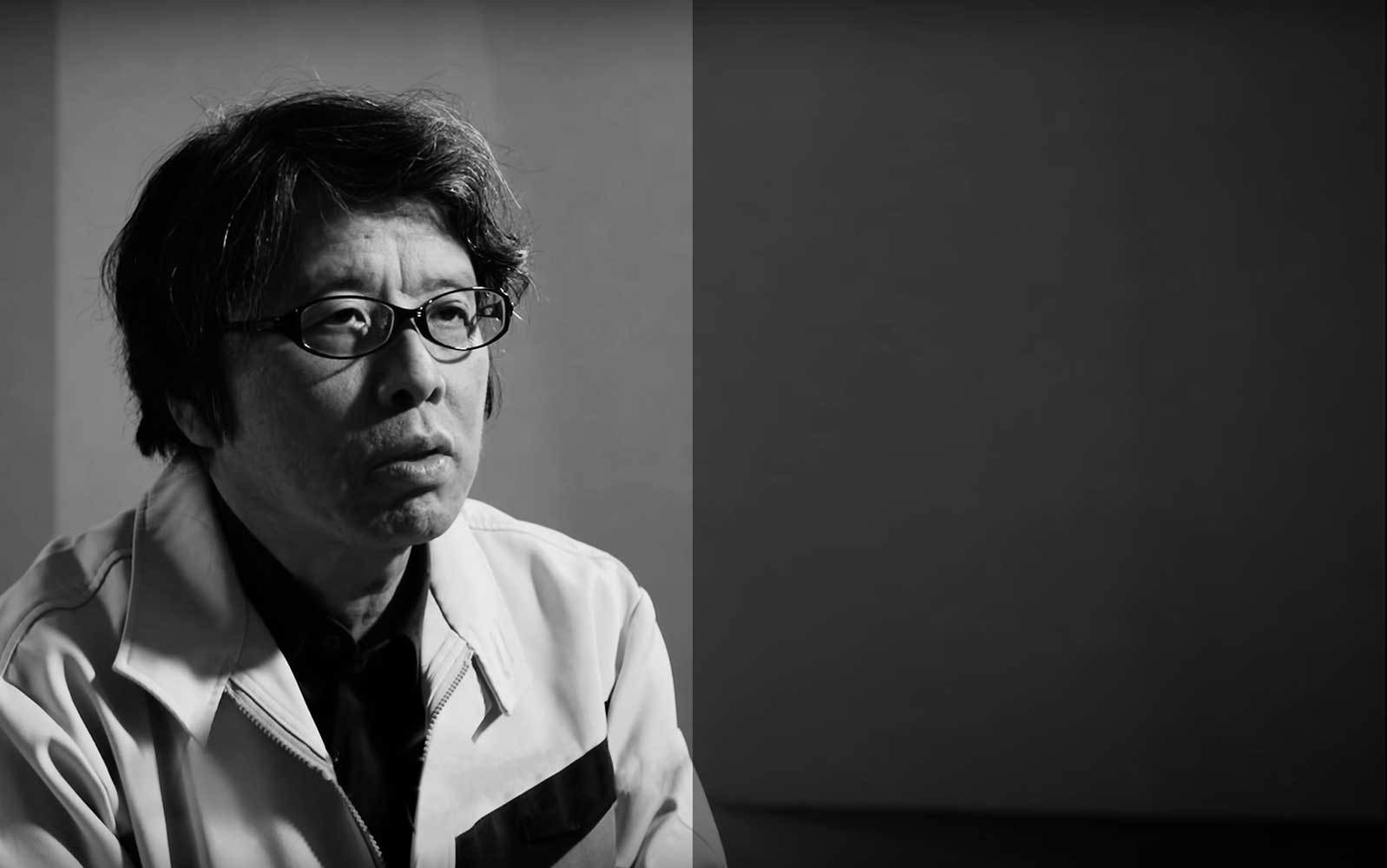
Eric Persing
(Original D-50 Sound Designer)
Eric Persing’s unique sounds and best-selling virtual instruments are used constantly by top music producers from all over the world and can be heard on thousands of major albums, Oscar-winning films, popular television series and video game soundtracks. From the original “Hoover” to “Digital Native Dance” and many more, Eric has created some of the most iconic sounds of Electronic Music.
As Chief Sound Designer for Roland from 1984-2005, Persing was deeply involved in the development of the key sounds for many popular Roland synthesizers, samplers and groove devices - from the vintage Jupiter and JX series, to the legendary D-50, D-70, JD-800/990, S-series samplers, Fantom series, the V-Synth and many more.
Persing is best known today as the Founder and Creative Director of Spectrasonics, his company that specializes in developing ground-breaking software instruments including the award-winning Keyscape®, Atmosphere®, Stylus RMX®, Trilian® and their flagship synth Omnisphere®.
Eric's lifelong love of the creative process is the driving force behind his pursuit of musical excellence.
Watch Movie

Adrian Scott
(Original D-50 Sound Designer)
Adrian Scott is a rare breed of musician – having forged multiple careers as a performer, musical director, writer, producer, demonstrator and sound designer.
His credits are like reading a timeline of popular music. From touring the world with such legendary groups as Air Supply and Little River Band to being music supervisor for a multitude of Australian acts, including Kylie Minogue.
Adrian has also been involved with Roland for more than 30 years, starting out as a demonstrator, then moving into R&D and sound creation. He has been instrumental in the development of Roland synthesizers, having contributed sonically to the designs of many of Roland's most beloved and celebrated synthesizers and sequencers, including the legendary D-50.
Watch Movie

The D-50 Legend as told by the Artists
The Legendary “D-50” NOW
Fast-forward 30 years, and the legendary D-50 returns as a software synthesizer on Roland Cloud, thanks to Roland’s powerful new Digital Circuit Behavior (DCB) modeling technology. Only Roland could capture every nuance of the original D-50, right down to the special “overtone noise” which created its unique warm and rich character. Read on to find out how you can try the D-50 today.
D-50 Reborn with DCB Technology
Kenji Sato (DCB Developer)
I took charge of reproducing D-50’s sound format in software, keeping as close to the original as possible. I carefully programmed based on the spec sheet of the IC chip used in the original D-50, studied the source code of the CPU, and continuously checked the output waveforms as I worked. This was how I reproduced the sound engine of the original. Recreating the accuracy of the D-50’s internal calculations was so difficult but I can say I am confident of the quality, even with many challenges. TAKE ME TO ROLAND CLOUD
Looking beyond LA, I am eager to reproduce many legendary Roland synthesis techniques using DCB in the future.
Experience the New D-50 with Roland Cloud
Visit www.rolandcloud.com and start your free 30-day trial, and you can be playing the new DCB-powered D-50 software synthesizer today. Signing-up for Roland Cloud is fast and easy. Once you’ve joined, you’ll enjoy the legendary D-50 on your desktop, as well as many more legendary Roland synthesizers, all available through an inexpensive monthly subscription. *Click here to see instruction guide.

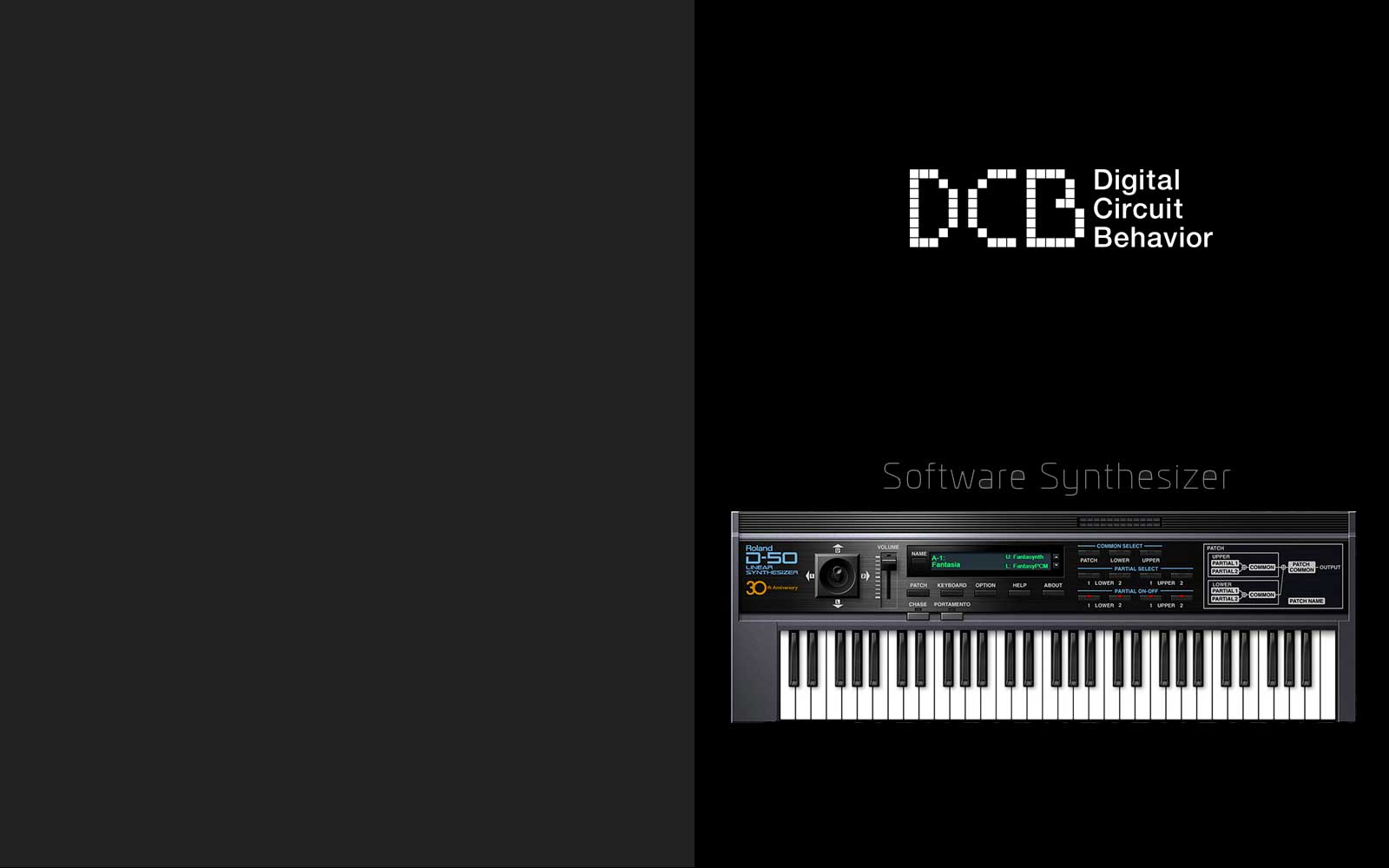
Introducing the latest addition to the Roland Boutique Series; The D-05.
Roland Boutique is a world of instruments that inspire electronic music creativity by expanding on the legendary sounds of the past with a workflow to suit the modern producer and musician. SEE D-05 PRODUCT PAGE
The sound of each instrument is immense and iconic with each original inspiration being a solid foundation to expand upon. The compact, portable form-factor of Roland Boutique allows for immediate creativity — whether it is performing live on stage, producing in your studio or creating for the pure enjoyment — Roland Boutique delivers powerful sound, anywhere.
The D-05 Linear Synthesizer is the newest Roland Boutique instrument. The iconic sound of the D-50 was reproduced perfectly through the combination of original PCM samples and DCB technology — a first for the Roland Boutique series. The D-05 is Linear Arithmetic synthesis for a new generation.

